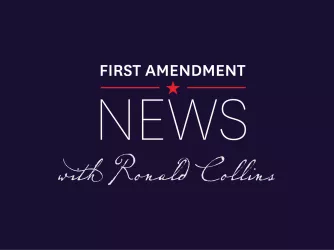Table of Contents
‘The Image of Hypocrisy’
Check out FIRE cofounder Harvey Silverglate’s recent column in the Boston Phoenix. Silverglate deftly calls into question the New York Times’ stated rationale for not publishing the infamous Danish Mohammed cartoons:
The 8″-by-10″ photograph was hard to miss. Appearing on page A-3 of the Sunday New York Times on March 19, the black-and-white image of Erno Nussenzweig—a retired New Jersey diamond merchant and a member of the orthodox-Jewish Hasidic sect—stared out at readers just cracking open the morning paper. Taken in Times Square in 1999 by artist Philip-Lorca diCorcia, the picture hung in a well-received 2002 exhibition of diCorcia’s work at Chelsea’s Pace/MacGill Gallery, and it appears in the show’s exhibition catalogue. Nussenzweig, however, was not pleased with this notoriety: like virtually all ultra-orthodox Jews, he embraces the biblical injunction against “graven images.” And so Nussenzweig brought to the New York courts a legal challenge against such types of “street photography,” alleging that his privacy was violated when diCorcia snapped his picture and the gallery and catalogue displayed it. The Times chose to run the picture yet again—indeed, millions of times—to accompany its March 19 story on the lawsuit. This, from the same paper that elected—allegedly out of respect for Muslim sensitivities—not to republish any of the satirical Danish cartoons of Mohammed that caused an international uproar just last month. As Dorothy Parker might have said, “What fresh hell is this?”
On February 7, Times editor Bill Keller told USA Today that publishing the Mohammed cartoons would be “perceived as a particularly deliberate insult” by Muslims, and that, moreover, not publishing them “feels like the right thing to do.” A Times staff editorial published the same day similarly intoned that the Times’ refusal to publish the Mohammed cartoons “seems a reasonable choice for news organizations that usually refrain from gratuitous assaults on religious symbols, especially since the cartoons are so easy to describe in words.”
So why publish something offensive to Jews—and, especially, to the orthodox Jew who was the unwitting and unwilling subject of the photograph—while refusing to publish something offensive to Muslims? It can’t be that the publication of Nussenzweig’s image isn’t sacrilegious. The same injunction against graven images causes observant Jehovah’s Witnesses to refuse to pledge allegiance to the flag. For that matter, it also caused Muslims around the world to protest the depiction of their prophet in the now-famous cartoons. It’s true that the greatest offense was given by the several that depicted Mohammed as a terrorist, yet the underlying prohibition against any depiction remains the same across the board.
Harvey concludes, “Either the Times engages in a double standard as to whom it will or will not insult gratuitously, or it has been less than candid about the real reason it refrained from publishing the cartoons.”
Harvey’s article is especially relevant in light of the recent row at NYU over the cartoons, which I had the chance to witness firsthand. I simply do not buy that it is somehow intolerant to show an image that you wish to discuss in an academic setting. Showing an image is not the same thing as endorsing its point of view, and universities understand that in many other cases. As I noted in a previous post:
Republishing a cartoon or image because of its newsworthiness is never assumed to convey a paper’s agreement with the underlying message of the cartoon. Would a paper be accused of being intolerant if it ran a picture of someone burning a cross on someone’s yard? Only by those most determined to be offended. Most people would understand that the picture is there because it is relevant to a story, not because the paper supports the Ku Klux Klan.
The arguments that papers and universities have offered to excuse their censorship of the cartoons have been so thin and inconsistent with their previous actions that it leads many of us to one stark conclusion: the real reason the cartoons are not being shown or published is simple, naked fear. The media and universities serve as two of the primary engines of discussion, debate, and the sharing of ideas and concerns in our society. That they should be so easily cowed by the possibility of violence is a frightening commentary on our educational institutions’ commitment to living with and protecting our most essential freedoms.
Recent Articles
FIRE’s award-winning Newsdesk covers the free speech news you need to stay informed.

Defending free speech: FIRE and Substack partner to protect writers in America

Brown University targets student journalist for sending DOGE-like emails

FIRE-supported Utah legislation secures students’ rights to freely associate on campus
